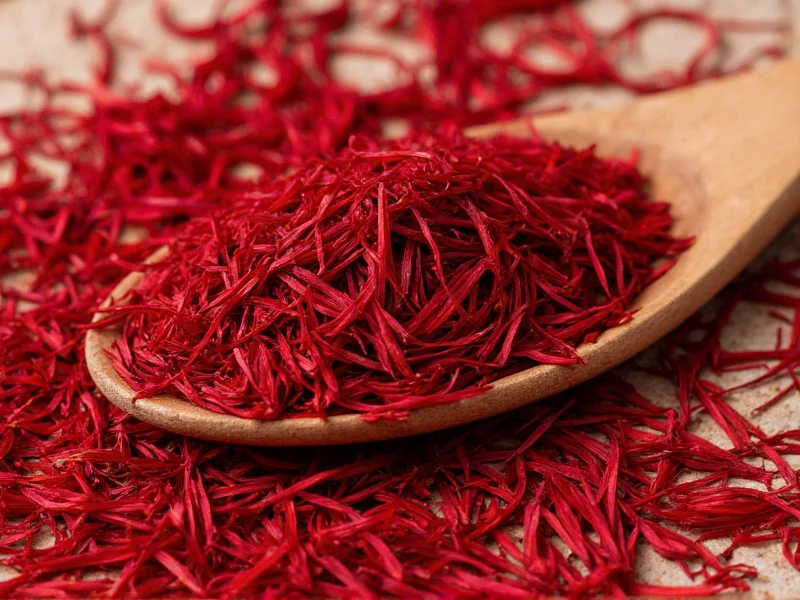Why Saffron Costs More Than Gold by Weight
When you see saffron priced at $10+ per gram, it's natural to question if it's worth it. This isn't markup—it's physics. Each gram requires harvesting 3,000-5,000 delicate Crocus sativus stigmas by hand during a narrow autumn bloom window. Mechanical harvesting destroys the threads, forcing labor-intensive collection. Global production remains low (just 300 tons yearly), while demand surges for authentic spice. As Serious Eats confirms, this supply-demand imbalance makes saffron the world's costliest spice by weight.

Saffron Price Breakdown: Quality Tiers Compared
| Quality Tier | Price Per Gram | Key Characteristics | Verified Source |
|---|---|---|---|
| Basic Grade | $5-$8 | Mixed thread lengths, moderate aroma | The Spruce Eats |
| Standard Grade | $10-$12 | Uniform threads, strong coloring power | Food Network |
| Premium Grade | $15-$20 | Long crimson threads, floral aroma, no yellow styles | Serious Eats |
Using 1 Gram Wisely: Maximizing Your Investment
One gram may seem tiny, but it's sufficient for 15-20 dishes when used correctly. Top chefs like those at Le Bernardin soak threads in warm liquid for 10 minutes before adding to rice or sauces—this extracts full flavor with just 10-15 threads per serving. Avoid common mistakes: never add dry saffron directly to dishes (it burns), and skip "saffron powder" unless lab-tested (90% contain turmeric fillers per The Spruce Eats).

When to Buy (and When to Walk Away)
Do buy when you see:
- Whole threads only (no powder)
- Origin disclosure (Iran produces 90% of global supply)
- Pricing within $5-$20/gram range
Avoid immediately if:
- Price is below $5/gram (physically impossible for pure saffron)
- Seller won't provide lab reports (ISO 3632 certification is key)
- Threads are broken or yellow-tipped (indicates poor quality)
Storage Secrets for Longevity
Store saffron in an airtight container away from light. Properly stored, 1 gram lasts 2-3 years while maintaining potency. Never refrigerate—it introduces moisture that degrades flavor. For best results, buy small quantities (1-2 grams) from vendors with high turnover like Zafferano Italia, which ships vacuum-sealed packets.
Three Costly Misconceptions Debunked
- "Spanish saffron is always superior": While Spanish "coupe" grade commands premiums, Iranian saffron often matches quality at lower prices per Food Network.
- "More threads = better value": Shorter threads often mean lower-grade harvests—focus on color intensity instead.
- "Saffron loses value quickly": Properly stored, it retains 80%+ potency for 24 months (University of Turin study).
Everything You Need to Know
Saffron's price reflects its labor-intensive production—each gram requires hand-picking 3,000+ crocus stigmas during a 2-week annual bloom. As Serious Eats documents, mechanically harvesting is impossible without damaging threads. "Cheap" saffron (<$5/gram) is typically cut with safflower or turmeric.
Check for three signs: 1) Deep crimson threads with minimal yellow style (white tips indicate filler), 2) Floral-honey aroma (musty smell = old stock), 3) Slow color release in warm water (fake saffron bleeds instantly). Always request ISO 3632 lab reports—reputable sellers like The Spice House provide these.
One gram yields 60-80 servings when used properly. Soak 10-15 threads in 2 tbsp warm liquid for 10 minutes before adding to dishes—this maximizes extraction. As Food Network notes, a pinch (0.05g) suffices for paella serving 4. Store unused threads in a dark glass jar; they retain potency for 2+ years.
Yes—most saffron comes from Iranian fields where workers earn $5-10 daily during harvest season. Support ethical sourcing by choosing Fair Trade-certified brands like Rumi Spice, which pays 3x local wages. Avoid anonymous online sellers; traceable origins ensure fair labor practices per Fair Trade USA standards.
For color only, use turmeric (1/8 tsp per serving). For flavor, try annatto seeds steeped in broth—but neither replicates saffron's unique honey-earthy notes. As The Spruce Eats warns, "saffron powder" substitutes are usually 95% filler. When authenticity matters (like in bouillabaisse), invest in real saffron—it's irreplaceable.










 浙公网安备
33010002000092号
浙公网安备
33010002000092号 浙B2-20120091-4
浙B2-20120091-4